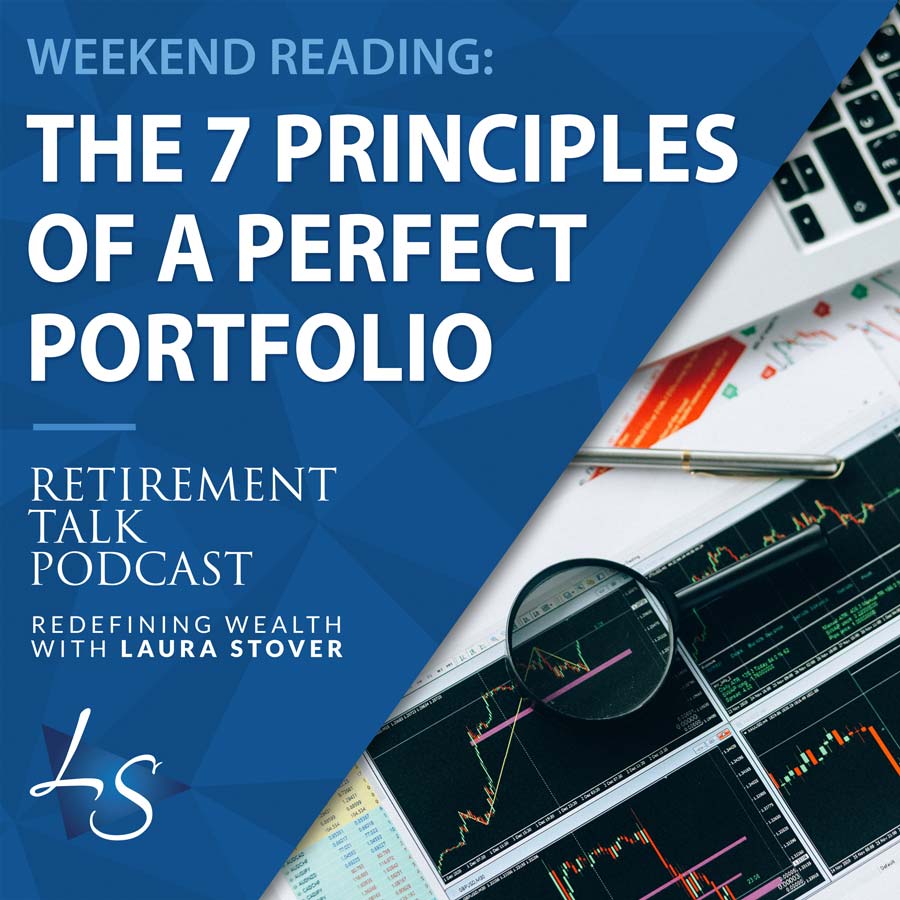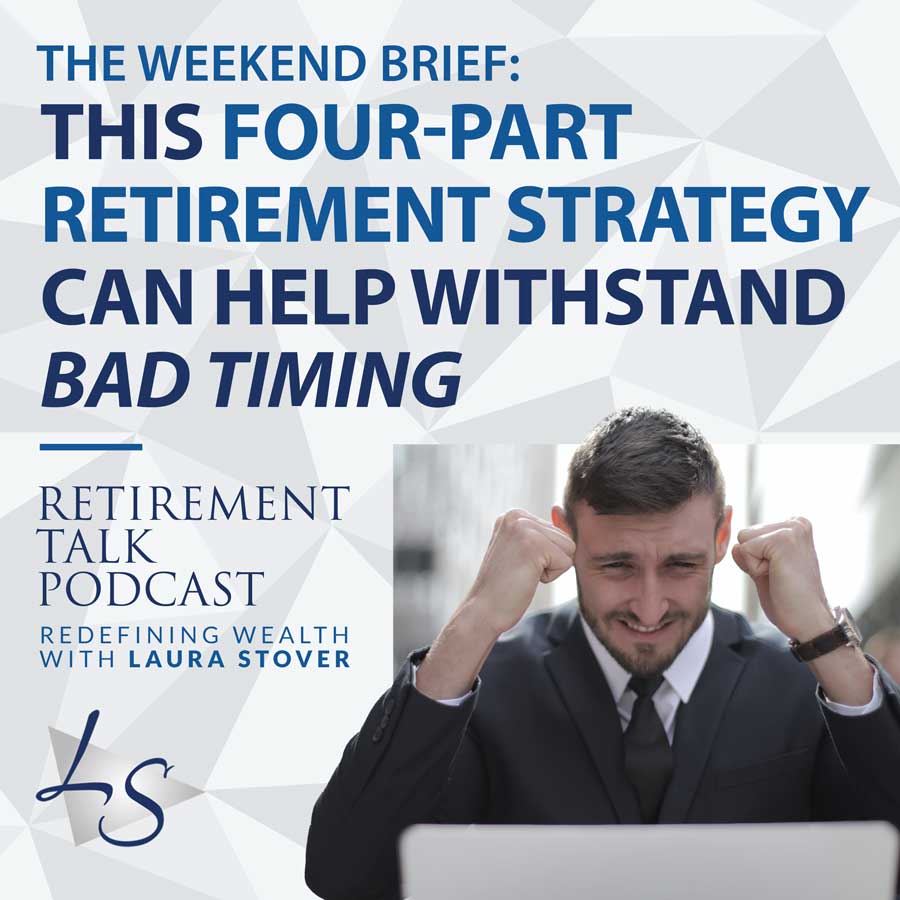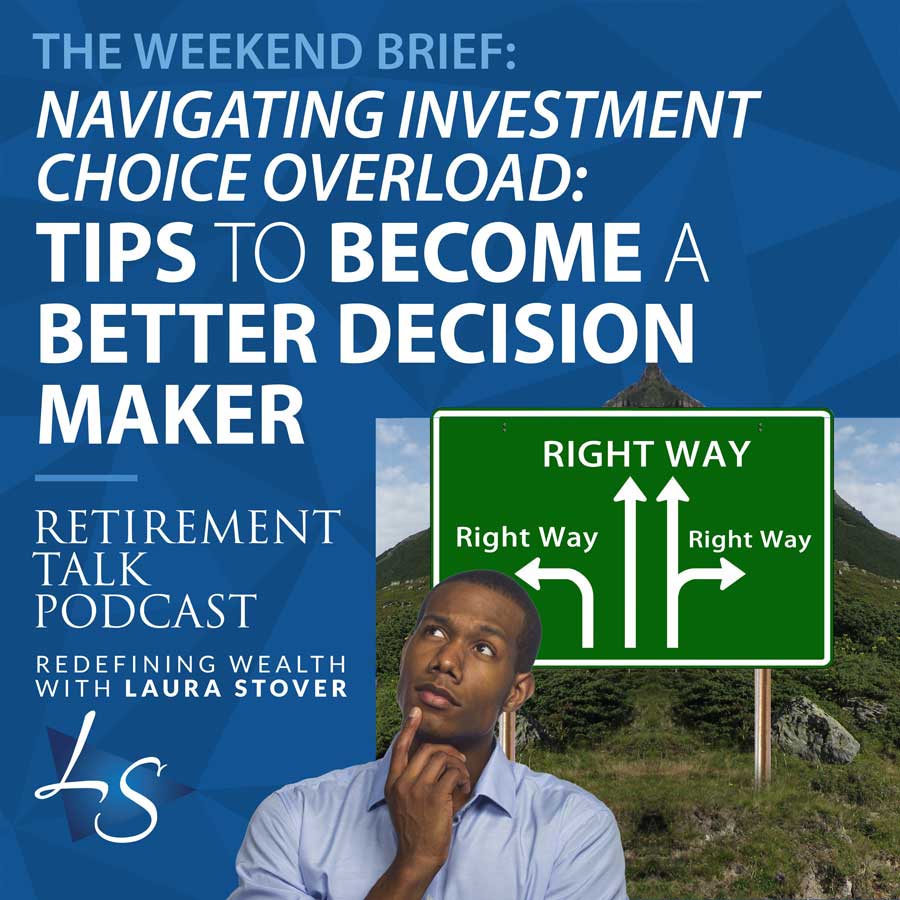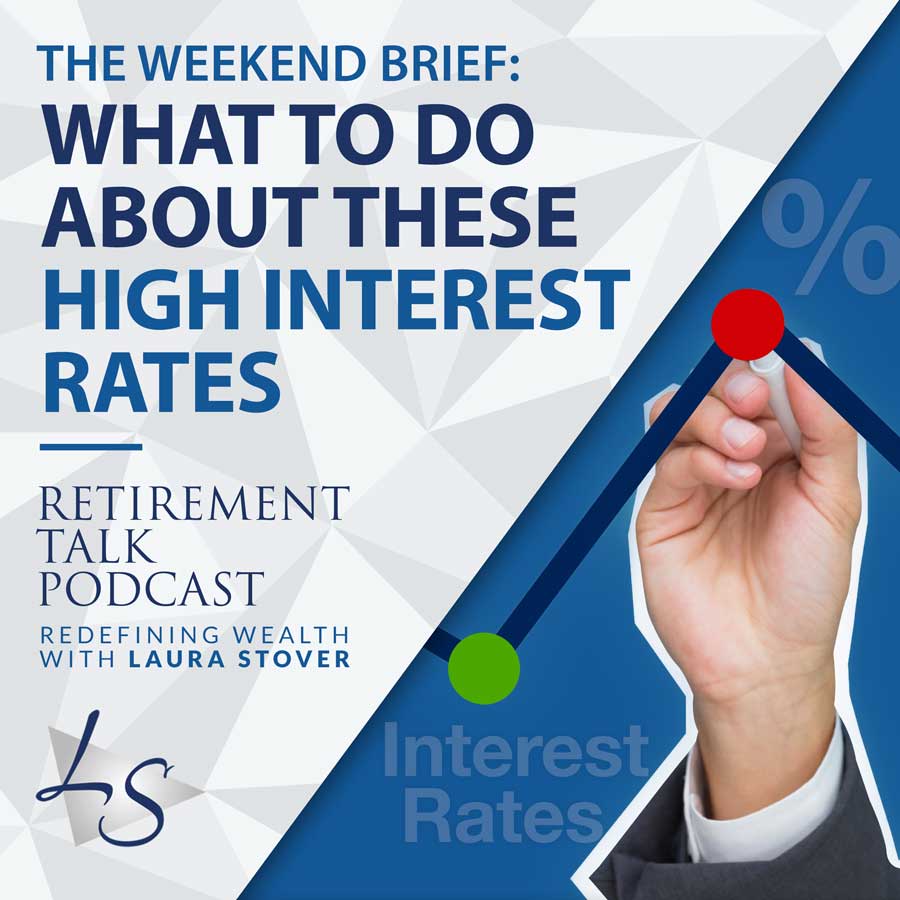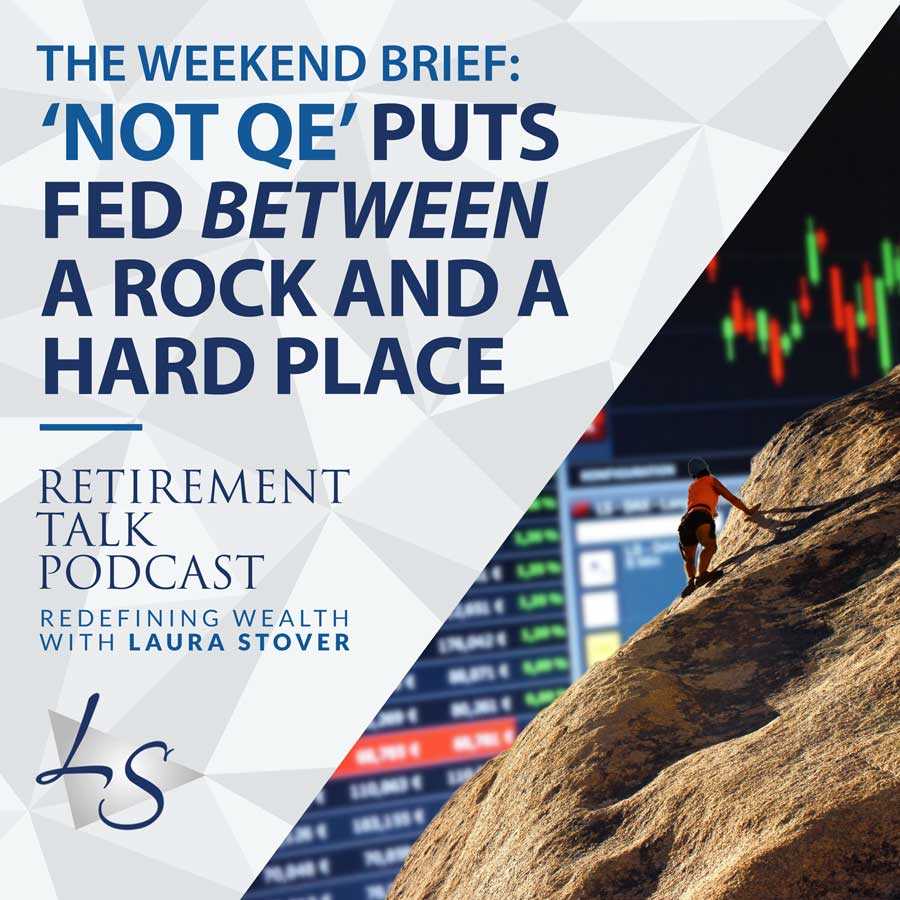There is no perfect portfolio that will fit everyone’s needs. Instead, we must ask ourselves what the perfect portfolio looks like for our individual lives. The market is a risky endeavor, so you really need to understand how much volatility you are comfortable with and how much is necessary to support the longevity of your retirement. Not everyone will look at risk in the same way. You’ll need to think about the entire framework of your plan, updating it when necessary. In order to start building the perfect portfolio, experts suggest focusing on your principles, process, and path.
Do you need professional assistance to help with your plan? This will depend on what they bring to the table, professionals can certainly help prevent blind spots in your plan. Can you pinpoint your comfort zone when it comes to financial gains and losses? Doing so can certainly be difficult if you are used to making emotional decisions. On today’s episode, we’ll explore 7 principles that are necessary to consider when building your perfect portfolio.
Review the article mentioned in today’s show >>
Rate & Review and Subscribe the Podcast:
https://podcasts.apple.com/us/podcast/retirement-talk-podcast-with-laura-stover/id571347188
LINKS
Schedule a Review: https://redefiningwealth.info/schedule/
TIMESTAMPS (SHOW NOTES)
2:22 – Does the perfect portfolio exist?
3:56 – Finding the right amount of risk
5:23 – The checklist to the perfect portfolio
7:58 – Do you need professional assistance?
10:35 – What can go wrong without a professional?
13:41 – Can you pinpoint your financial comfort zone?
15:36 – Does everything in your portfolio have a defined purpose?
22:55 – What are your current and future financial needs?
27:32 – Collecting products off emotional viewpoints
30:35 – Having a thorough process not just a product
Listen & Subscribe
Review the Transcript:
Ron Stepp:
Welcome to Retirement Talk, the Redefining Wealth show. Work source for financial information for pre-retirees and retirees. We are here to help you better navigate during these economic times. We’re here to discuss thoughts and ideas in the field of finance and retirement, as well as discuss trending topics and the impact of major legislation that can impact your retirement. We will break it all down.
Ron Stepp:
These discussions can help you make better informed decisions so you can live the lifestyle you imagined and make better financial choices. Laura Stover is a registered financial consultant and CEO of LS Wealth Management, as well as founder and owner of LS Tax, a consulting firm.
Ron Stepp:
She’s been featured in Forbes, CNBC and The Wall Street Journal. I’m [Ron Stepp 00:00:58]. Our topic for today is seven principles to help you create your perfect portfolio from Barron’s. Now, here are your hosts, Laura Stover and certified financial planner, Michael Wallin.
Laura Stover:
Hello. Hello. Hello. And Michael Wallin, my co-host and good friend, certified financial planner, how are you today?
Michael Wallin:
I am doing wonderful. I’m probably a little bit like you. I am ready for old man winter to find a path down to the Key West and bring us a little bit warmer weather. How about you in Ohio?
Laura Stover:
Yes, absolutely. And before we started recording two days episode, we have determined, folks, some important information. And you heard it right here on the Retirement Talk podcast. Is it March 21st, Michael, that we determined daytime goes to 12 hours? So March 21, right? That’s our day to-
Michael Wallin:
March 21, 12 hours and nine minutes of sunshine. So, we will start tilting back towards some sunnier days and longer sunshine.
Laura Stover:
Well, that’s important to know because winter can become a wearing time of year, getting dark so soon. And I was all excited just the other day. I think we had 15 more minutes of daylight here where… I am in Northwest Ohio, and we’re talking to clients all across the country. And today, our show is focusing on an article from Barron’s, and it’s called basically The Perfect Portfolio. Does that even exist, the perfect portfolio?
Laura Stover:
And I think this conversation is so incumbent. We speak with clients weekly, who listen to the show. They’re taking advantage of that 15-minute strategy call. They have questions, and it’s been a bit tiresome, that’s why we’re looking forward to that March 21st date. Because we’ve been in this pandemic for… Is it two years now? Two and a half years?
Michael Wallin:
Two years and it feels like a decade.
Laura Stover:
Everyone has varying opinions on the pandemic and we’re not going to detour into a discussion on that. But it is wearing on a lot of people, because we still are going through, I think, some isolation in some cases. Other people are dealing with sickness. Other people are dealing with a little bit of an experience from the market being a bit rocky right now, as we are into 2022 and January has definitely started bumpy.
Laura Stover:
So, I think we have a timely discussion. And I’ve mentioned before, it’s study and true, there is no perfect portfolio. But what’s the perfect portfolio for you, is the question. Now, that’s a distinguishing factor. I’m going to let your philosophy start right there, Michael. There’s no perfect portfolio. What is a perfect portfolio, more or less? What is the perfect portfolio for you? And how do people want to frame that?
Michael Wallin:
Yeah, I believe it. You got to start with analysis. You have to really understand that you are exposing your assets to risk. The markets are a risky endeavor, and you’re going to expose your money to risk. And what you need to understand is, how much risk is actually necessary to make your portfolio perform in the way that you need it to, that allows you the highest probability of success that those assets will last not only today, but all the way throughout your retirement years, providing you the quality of life that you’ve come accustomed to enjoying, but without over risking those assets, not being there, and also structuring.
Michael Wallin:
How those assets are set up to make cash flow analysis so that you have the cash that you need. You’re not having to sell off at times when the market may not be favorable to you. But it begins and ends, as Stephen Covey always says, “Begin with the end in mind, and to understand and know what that end in mind is, you’ve got to start with the analysis.” And that’s part of what we do through the LS Wealth process, is really, as my grandfather would say, measure twice and cut once.
Laura Stover:
That’s good advice and that is so true. A lot of people’s perceptions though, they think they may have the perfect portfolio. Maybe it’s the perfect portfolio at a certain point in time, but maybe they have not made significant changes, like a couple years down the road, a year down the road even. That duration really has no end in sight as conditions change. Maybe they experienced a bad market downturn in 2008. So now, we are taking on new types of risk, like erosion of purchase power.
Laura Stover:
In 2008, even though we had a very volatile market situation, Michael, we did not have 7% inflation, in 2008. So, things change. So, according to the article, we need to incorporate the three P’s of investments, principles, process, and path. Are Redefining Wealth process covers the key risk that retirement age, and retirees, and investors as a whole need to be thinking about the entire framework?
Laura Stover:
And as we cover these principles on today’s show, I want to also provide some key takeaways that we think should be a part of your process and framework when it comes to your portfolio construction. So, some things to think about, and in order to begin introspectively thinking about out what your ideal portfolio looks like. Well, experts recommend going through a seven-step checklist amongst some other items. And some of the most noteworthy points to consider that we want to point out, determine, first and foremost.
Laura Stover:
Maybe you are one of those do-it-yourselfers. Maybe you’re very proactive with your own portfolio, and making the investment decisions, determining all of the aspects of it. Well, how much time, energy, and expertise do you really have? You may be an avid reader. You may listen to a lot of podcasts. You may be an information person. I like to think I’m always looking for coaches. I’m always striving to learn.
Laura Stover:
I don’t care what college degrees you had, maybe 15, 20 plus years ago. We need to continuously evolve and learn, because things do change over time. So, the first lesson here on those P’s, really regarding a perfect portfolio, do you need professional assistance? How does one determine that, Michael?
Michael Wallin:
When we’re looking at that professional assistance, I think the biggest thing is, does that professional… Are they able to bring you current research? One of the biggest differences… And I had this discussion this morning with a client that was asking me about some of the models that we have built, and how much influence did they have on the underlying holdings.
Michael Wallin:
And I asked, I said, “Well, where would you be receiving your research to make the proper due diligence and determination on asset allocation inside of it?” I said, “Now, if you’re using your local news, or you’re reading an article that you may have read in the newspaper or a periodical,” I said, “I want you to think about how old is that data by the time that you’re actually receiving it.”
Michael Wallin:
Because there’s a big difference between a firm, that actually has a research team or an independent practice like ourselves, that may have multiple research firms, that is providing us information as information is being created. And then, I told her, I said, “One of the things that you have to look at is, how fast is that information being provided to you?”
Michael Wallin:
Because when you look at hedge funds that have large computer systems, and they pay millions and millions and millions of dollars for these high speed systems that trade in nanoseconds, and then you’re reading a piece of information that, not only was the writer, they had to be exposed to it, but then they wrote the article, then it had to get published, and then a distribution place had to submit out the magazine and it ended up on a shelf at a grocery store that you just happened to buy.
Michael Wallin:
I said, “Did that take two weeks, three weeks, four weeks? How old is the information that you’re trying to react on when a hedge fund traded in nanoseconds?” And that’s like a lifetime difference. So, a lot of people are out there trying to make decisions on stale information. And that professional, if you’re interviewing a professional and you want to determine what they’re going to be able to help you do, first of all, start with where do they get their research?
Michael Wallin:
What makes their knowledge base or their application superior to what you’re doing? I think that’s the first step in evaluating what type of professional you want to use.
Laura Stover:
And some of those research firms, which also manage, at least on our platform, and many of these research firms are creators of products. They’re going to adapt products, algorithms based on the research because the market is not static composite, volatility changes, sectors change, some of the technical and fundamental analysis, they go into analyzing all of this. The whole approach.
Laura Stover:
So, this is where the innovation of different tools become available. And I’m… There’s a lot to keep up on. So, I give [inaudible 00:11:18] or some people that manage or self-manage relatively well, but I always see shortfalls at some point in that process.
Michael Wallin:
One of the things, Laura, last year, our family went on a little family vacation. And we decided we were going to do a little bit of white water rafting. And so, it mirrored a lot of what we do. We got into the water in an area which was very calm. And for those that are listening today, if you think about the stock market over the last 10 years, what has been your experience?
Michael Wallin:
It’s not been bad. There’s been a couple of contractions, but the last 10 years, you putting honey in and you’ve been making money, everything was pretty calm. And that was like when we started on the white water rafting. We’re starting down through there, and there’s eight of us in the boat, and we’ve got a guide that’s sitting on the back of the boat. And you really are sitting there thinking, “Hey, this guy’s dead weight. Why do we need this guy? I mean, we’re all paddling. We’re doing great.”
Michael Wallin:
Now, I’ll tell you when that guide earned his money, is in the event, when the water started getting rough and it became the white water, and we all put our paddles up in the boat, and then he guided the boat to safer landing. And I think a lot of times for investors, they find themselves in that same scenario. They look at, “Well, what’s the value? What’s the value add of this professional?”
Michael Wallin:
Well, anybody can paddle the boat in the calm water, it’s who can navigate you when it gets rough. And that’s what that professionals going to do through that research that is being provided to him.
Laura Stover:
I don’t know about you, but I would be thrilled if I was in a raft going down all those bumps, curves, white. I would want somebody that has experience. He does that multiple times through the day, with every type of person. He’s heard all of the screaming in the world, I’m sure. And someone with experience, who’s been down that path before. And they always say, when you do mountain climbing, you have a Sherpa, which is kind of similar to the person and the raft, the guide.
Laura Stover:
And they always say the most difficult part is not making it to the top of the mountain, but coming down is where most of the deaths occur. So, in addition to that thought process, analyzing your current and future financial needs, and being able to pinpoint your comfort zone when it comes to financial gains and losses, I think people have a very hard time not being emotional and objective.
Laura Stover:
How do you determine and pinpoint? You have to have a process that you agree to when it comes to financial gains and losses.
Michael Wallin:
To your point that you said earlier is, it has to change. I look at portfolios that we had constructed for clients, six years ago. We didn’t have a strong position and energy at that time, because we did not have a strong inflation rate. I mean, inflation has been non-existent for a period of time. But when we look at, in 2021, what is one of the strongest sectors of the market? And it was energy.
Michael Wallin:
So, your portfolio has to constantly being modified based upon, as Wayne Gretzky said, “You skate to where the puck is going to be.” In our line of business, we look at, where is momentum? Where is the dollar going? Where is the opportunity? And that’s where you should be restructuring. That’s why you need to have an investment committee that is constantly adjusting the underlying models that you’re using, that allows you the highest probability of success.
Michael Wallin:
And unfortunately, a lot of people go into a buy and hold strategy, and they could be in favor this quarter, but for the next 18 months, 24 months, they may find themselves that their investment strategy was underperforming because it did not move as momentum would direct the guidance. And that’s one of the biggest issues that I have with a strategic approach versus a tactical approach.
Laura Stover:
Well, lastly, on this part of the perfect portfolio discussion here. It talks about in the article, navigating that process. You can begin your path to the perfect portfolio in this phase and pinpoint your portfolio balance. I’m often talking about balance. We evaluate a lot clients who really the balance part is really drastically off. Nine times out of 10, I would say 85% to 90% of the time, that is the case.
Laura Stover:
They’ve had a fear in the past, so they’re heavily weighted too much to one type of whether it be fixed income, whether it be annuities, whether it be bonds or on the flip side, were they taking more risk than they should. And they’re too heavily correlated to the market. But the proper balance and the article highlights four levers, which can be utilized to help you reach your desired outcome, and it’s all about perspective.
Laura Stover:
The bottom line, you’ll benefit from being open to strategies and concepts. They may not be right for you today, but they could be in the future. And I think there’s a lot of weight in that perception and viewpoint. Maybe you’re not even appreciating if you’ve had this well thought out through a process, rather than a product peddler. Just at the moment, something sounds good with a feature, and now it’s in a part of your portfolio.
Laura Stover:
But really making sure there’s a framework in place where this can adapt and have the aspects to it over time with changes that need to occur, but having that proper framework and being able to really appreciate that down the road. Maybe you’re not taking income today, but you don’t just flip a switch and turn it on in a week. So, you have to do the big picture overview, so that everything has a defined purpose and a reason. Let’s expand on that thought process a little bit.
Michael Wallin:
Yeah. When you’re looking at retirement… Let’s just say you’re at that section or time period in your life, and everything becomes cash flow. Am I going to be able to have a sufficient amount of income? Whether it be from my investments, if I happen to be fortunate enough to have a pension, or if it’s through social security. Do I have enough cash flow to be able to make my monthly needs?
Michael Wallin:
Well, that’s great. As you start looking at your portfolio and you think, “Okay, I’ve got a sufficient amount coming in under today’s circumstances.” But what if the market changes? And we see a contraction in the market that moves by 20% or 30%, and your portfolio is impacted at equal pro rata share that… Well, are you able to go down to your utility company and say, “Hey, I’m sorry, but my portfolio reduced by 20%, so I need you to cut my bill by 20%”? That doesn’t happen.
Michael Wallin:
You can’t go to the grocery store and tell them, “Hey, cut my expenses by 20%. My portfolio isn’t doing as well as I thought.” And so, that’s one of the reasons we come in and really identify the assets. You have your growth-producing assets, and you have your income-producing assets. And we try our best to get as much of our income-producing assets out of the equity markets. We do not want those assets to be 100% dependent upon the equity side of the market because of volatility.
Michael Wallin:
But then, the same thing, we’re not going to treat our growth-producing assets in the same way we do our income-producing assets, because the growth needs to be able to have equity exposure, to be able to outpace inflation or keep up with inflation, so that we have longevity in our portfolios and we avoid the longevity risk that comes into it.
Michael Wallin:
But again, it goes back to identifying, doing a comprehensive review, knowing what we’re trying to solve for, then backing into the solution that gives you the highest probability of success.
Laura Stover:
Well, there’s some bright minds around this concept of the pursuit for the perfect portfolio, and Professor Andrew Lowe has a book. He’s a professor at the MIT Sloan School of Management. And along with his colleague, Stephen Foerster, a professor at Western University’s Ivey Business School, it’s titled, In Pursuit Of The Perfect Portfolio.
Laura Stover:
And 10 of the world’s most prominent figures in the finance world, including Harry Markowitz, Bill Sharpe, which we refer to a lot with the Sharpe Ratio in our industry, Bob Merton, Jack Bogle, just to mention a few. And Jack Bogle, of course, founder of Vanguard Funds. And what was he famous for? He made everyone conscientious about fees.
Laura Stover:
And I think one of the key things from these brilliant minds in terms of their contributions to the science of modern investing, each of them had a focus on a particular aspect of our financial lives. And we actually need all of these different perspectives and aspects when we’re looking at designing a perfect portfolio. And we need many different perspectives, as many as we can get quite honestly, because we never know what circumstances we’ll be in, and what particular ideas could be helpful.
Laura Stover:
We’re going to continue this discussion and dive into the seven investment principles that you need to have the perfect portfolio. All here on the Retirement Talk podcast.
Ron Stepp:
To learn more about how we can help you redefine your wealth and make sure you’re on the right financial track, again, go to redefiningwealth.info and schedule a strategy review, to talk more about your unique situation and how we can help you, redefiningwealth.info. You’ll also be able to get access to today’s show notes. Now, back to seven principles for a perfect portfolio with your host, Laura Stover and Michael Wallin.
Laura Stover:
If you would begin the process of creating your perfect portfolio with a checklist, I’m all about list, all about writing down goals this year. They say, if you actually write things down, not just even typing it on the notes in your iPhone, but actually writing it down, it may not be a reality now. But you write your goals down, something about that manifestation, maybe to think a grow rich book and those types of things, but it helps people to change their habits.
Laura Stover:
And when we wrap our minds around the portfolio construction, in terms of what is a perfect portfolio, you really have to cover principles of investing. And there’s seven in particular. The first is the way you think about what it is you’re really trying to accomplish? Are you trying to do it yourself, or do you need professional help? And we kind of address that in the first part of the show.
Laura Stover:
And the second would be, determining what your current and future financial needs are. That one, is one of the most important, I think, principles. You’ve got to determine where you are today, and what are you trying to achieve? That’s a measurement and a metric in everything that we do.
Michael Wallin:
Yeah. When you’re looking at the interdependency between your earning power or your cashflow, and your expenses, this is one of the reasons I really like to use the financial software life arc plan. Because what it does is, it is very budget centric. And once you start understanding what your income needs are, then you have the ability to back in to how much cashflow. And then, the most important aspect, is it will come in and actually tell you what rate of return is necessary to make your plan successful.
Michael Wallin:
And that magic number, Laura, I think, is critical. Because as we talk about the perfect portfolio, as we look at these things, so many people come in and they chase the market. Everything is recency bias. And a person will come in and say, well, I’m aggressive, or I’m conservative, or I’m moderate, whatever their emotional bias is, and the reality is, it really doesn’t matter what your emotional position is. It only matters to how much risk exposure to your money.
Michael Wallin:
Because if you don’t make enough money or you don’t expose your money to enough amount of risk, you have a shortfall, then you’re going to have failure in your retirement plan. And the best analysis that I could say about understanding current and financial needs is… Let’s just say we were flying out of Atlanta, Georgia, and we wanted to fly to Seattle, Washington. And so, we decided we were going to get on a plane. And the airline decided that they would put half the amount of fuel in the plane necessary to make that trip. Well, no matter-
Laura Stover:
I’m not going on that flight.
Michael Wallin:
Well, unfortunately, there’s a lot of people in the investment world that are, in portfolios, that are in that scenario. They get on that plane, and it takes off flying, and the result is, they’re going to land somewhere, maybe Denver, but they are not going to make it to their destination. Because if they tried to make it work, they’re going to crash.
Michael Wallin:
And it’s the same thing is, how much fuel is necessary to make that airline flight a success, is the same approach of how much risk in your investment portfolio do we need to have, to make sure that we have a safe landing in retirement? And that’s probably the best analysis that I can think of.
Laura Stover:
Well, the fourth principle here, thinking about your investment philosophy. What you believe about the markets? What do you believe about the market? I think that’s a big one. They’re all big ones. Maybe, at the time I made an investment decision, I went to… Maybe this was pre-COVID. Maybe I went to one of those great seminar presentations. The person speaking was a fabulous speaker. I really enjoyed it. And the steak and chicken was really good too.
Laura Stover:
But, part of what was said, maybe we were in a market correction, a little hiccup like we’re going through now. And I like that concept about not losing my principle, and participating in market gains. Boom! Do I move all of my investment philosophy now over to that concept, in and of itself, that may make some sense? Maybe it makes sense for the proper balance. We come back to balance again.
Laura Stover:
But that doesn’t necessarily mean we change where we have no planning or process behind… If we don’t have a process, we’re making emotional decisions too many times that are not in our best interest. And in and of itself, there may have been some truth in that program and what was said, but we’re taking it out of context.
Laura Stover:
And that’s the concern that I have oftentimes, that people are not really going through a thorough process, like with our proprietary life, our planning system. Because if you don’t have the cash flow worked out, if you don’t have the budget, if you don’t know the future expenses, if you don’t understand rate of return that you need to be successful, if you don’t have the risk-off built into that, and planning for the income, I believe income should always be guaranteed, there’s a mismatch far too often.
Laura Stover:
And people have collected products and things that sounded good at the time based on their emotional viewpoints at that time.
Michael Wallin:
Several years ago, and I don’t do this anymore, but when I’d have clients come in, my oldest daughter today, she used to have these puzzle boxes, Laura. And each of the puzzle pieces were the big pieces, and there was four pieces that you had put together. So it was the very elementary version of these puzzles. And we had four of these different puzzles at home, and I was going to throw them away and I thought, “No. I think I’ll take those to the office.”
Michael Wallin:
And what I would do is, clients would come in, I would set those four boxes up on the table there. And each of them have four pieces in them. And I’d say, “Now, take four pieces and let’s put a puzzle together.” Now, what would typically happen is, the client would come in and they would select one piece out of each of the four boxes.
Michael Wallin:
And I’d say, “Okay, put them together.” Well, sometimes they would fit together, sometimes they don’t. But even if they fit together, it didn’t give you the right picture. And then I would ask them, “Why did you take four pieces, one piece out of each box? Why didn’t you take all four pieces out of the same box?”
Michael Wallin:
And there’s two things that happens there. One, is that’s the same way as if we’re buying financial products that you think they fit together, they may or they may not, but they’re never going to give you that picture that you’re hoping for at the end of retirement, because it wasn’t the design.
Michael Wallin:
If you took all four out of one box, “Oh, here’s a beautiful picture of Cinderella.” But you may have one piece of Cinderella, and one out of Jasmine, and one out of the frog and at end of the day, they fit together, but it’s not the right picture. And it’s the same thing when you’re emotional, and you go out there and you go to the chicken dinner seminar, and you get sold because you heard on the news, the market’s down and you say, “Oh, I’ve got to abandon this.”
Michael Wallin:
The one thing that none of those professionals that you mentioned earlier, Harry Markowitz, Bogle, none of them would ever say abandon your process. The market expands and the market contracts. But overall, when you stop looking in the microscope and step back a little bit, the picture looks great. The market has went from the bottom left to the upper right. You just have to trust that the process that’s been put in place is going to get you to your destination.
Laura Stover:
And that indeed is part of having a process, a thorough process. Not just a product, not just a narrow perception. You have to be able to identify the characteristics of your degree of risk aversion. The magnitude of your current and future wealth, and your earnings power. How is that going to play out going forward. The magnitude of your current and future financial needs, and really what’s the investing environment and that all comes as part of a risk criteria.
Laura Stover:
And the income, and the spending, and the environment that you talked about. And the article beautifully lays out a lot of this. And a lot of people appreciate some complexity, but there’s so much available on Google these days, or an app like Robinhood, that’s so limited.
Laura Stover:
And what again were your garnering information. I think Google has eradicated the era of the encyclopedias, by all means. It has been a good technology, but maybe people are very much over using it now because we’re all becoming doctors, we’re all becoming attorneys. We are all experts, with the click of a button and all of the information that’s so accessible.
Laura Stover:
And so it becomes very complex and a little cloudy. Know where your source of information is coming from. And you have to have a process, and a plan that goes a little deeper, that peels back some of these layers, and making sure that the path, for instance, whether your portfolio should be equity dominated, or balanced, or roughly equal in stocks and bonds, and based on your willingness to take risk, you have to know through proper due diligence, what is your portfolio?
Laura Stover:
What does it need to look like? What’s best for you at the moment? And what’s best for you in the future? And how adaptive is it over time? You never step in the same river twice. You’re changing all of the time. And the way you get to where you need to go, it really actually matters. And where all just a product, not just our times, but our histories, our experiences.
Laura Stover:
And you need to take into account both the previous path that got you to where you are, as well as the future path that you’re going to take in order to try to reach your goal. Life is a path dependent on, therefore investing. And it has to be dependent upon a path as well. And we hope that you’ll take advantage of… We’d love to speak with you for a few moments, answer any questions that you may have.
Laura Stover:
You can go to redefiningwealth.info, schedule a call with Michael and myself in the convenience of your home or virtual meeting. We’re happy to answer any questions from the show. You can also obtain show notes and more information. Again, that’s redefiningwealth.info. And if you’d like a complementary copy of the Art of Wealth Management, reach out to us through redefiningwealth.info.
Ron Stepp:
Redefining Wealth is a register trademark of LS Wealth Management. Take advantage of a complimentary plan. Know where you stand regardless of the market. Walk through the Redefining Wealth process, and have a clear picture of the key risks you likely will face, and achieve a deeper understanding of how to properly plan for these risks with the Redefining Wealth framework.
Ron Stepp:
Schedule a strategy session now by going to redefiningwealth.info, and click schedule. That’s redefiningwealth.info, click schedule. Redefining Wealth is a registered trademark of LS Wealth Management. Investing involves risk, including the potential loss of principle. Any references to protection, safety, or lifetime income, generally referred to fixed insurance products, never securities or investments. Insurance guarantees are backed by the financial strength and claims paying abilities of the issuing carrier.
Ron Stepp:
This show is intended for informational purposes only. It is not intended to use as the sole basis for financial decisions, nor should it be construed as advice designed to meet the particular needs of an individual’s situation. LS Wealth Management, LLC is not permitted to offer and no statement made during this show shall constitute tax or legal advice. Our firm is not affiliated with, or endorsed by the US government or any governmental agency.
Ron Stepp:
The information and opinions contained herein provided by third parties, have been obtained from sources believed to be reliable, but accuracy and completeness cannot be guaranteed by LS Wealth Management, LLC. Investment advisory services offered through optimized advisory services and SEC registered investment advisor. LS Wealth Management is a separate entity.
